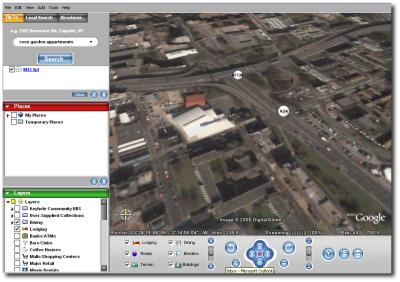Injury-Remedy Marketing

Beware of the ‘marketing cowboys’
 ARKETING can be a rather sick ‘science’. The story that I present here should hopefully illustrate this. The other day, after I had played my 3rd game of squash in this year’s competition, I got a free running technique (or stride) examination. This was conduced with a laptop (runs Winders, quite sadly) and a video camera.
ARKETING can be a rather sick ‘science’. The story that I present here should hopefully illustrate this. The other day, after I had played my 3rd game of squash in this year’s competition, I got a free running technique (or stride) examination. This was conduced with a laptop (runs Winders, quite sadly) and a video camera.
Needless to mention, the intent was to sell me corrective footware by suggesting there will be horrible consequences without it. It’s the fear, uncertainty and doubt (FUD) method to marketing some medicine or other remedies. Say to someone “there is problem with you”, then offer the cure. Moreover, part of the techniue is put the elixir close to one’s reach using, e.g. some leaflet. Some would argue this explains the separation between a doctor (who can’t/won’t directly sell) and the pharmacy where nothing is being prescribed. It’s like a self-supervising/moderating system; a peer-review framework if you like, and one which involves more than one person or practice.
Insurance companies like to take advantage of this sleazy marketing approach. I can recall a funny robots clip which aired on Saturday Night Live. In the video, robots are said to steal seniors’ pills and terrorise them. In turn, naive citizens are advised to buy insurance that covers no concrete threat. Greedy companies essentially cash in on ignorance.
Returning to my story which demonstates this case, I was advised to change sneakers every x miles (3-4 months). I was offered ‘special’ shoes that would suit me and was even pointed towards a shop that is run by the examiners. Being a computer-oriented person, I could not help thinking of ‘waste culture’ in this context, much like Vista’s steep hardware requirements. There’s also that old advice which says businesses should throw away malware-infected workstation. Go figure… or come to think of Live OneCare, which is a security product which Microsoft sells in order to protect its already-broken product.
I thank the folks who did the test for teaching me a lesson about myself (as useless as it was), as well as the (sort of) self-branded gift and leaflet. However, I am unlikely to fall for that marketing trap. As a child I saw my parent almost falling victim the the highly prevalent vacuum cleaner salesman tactic — reveal a lot of filth, spend many hours working without pay, then offer a pricey electronic appliance. I can’t recall if it was a Hoover or a Dyson.






 Filed under:
Filed under: 
 The CNN ran an article on some mind-boggling research. It addresses the
The CNN ran an article on some mind-boggling research. It addresses the  AST month I discussed the need to
AST month I discussed the need to 

 ODAY I would like to explain, in a relatively shallow level of depth, my most basic backup routines. I will concentrate on a somewhat simplified perspective and that which involves my current backup approach for local files, as opposed to the Web. The method is largely automated, owing to cron jobs (scheduler-driven). More details and method were described in older blog items. For example, have a cursory look at:
ODAY I would like to explain, in a relatively shallow level of depth, my most basic backup routines. I will concentrate on a somewhat simplified perspective and that which involves my current backup approach for local files, as opposed to the Web. The method is largely automated, owing to cron jobs (scheduler-driven). More details and method were described in older blog items. For example, have a cursory look at: